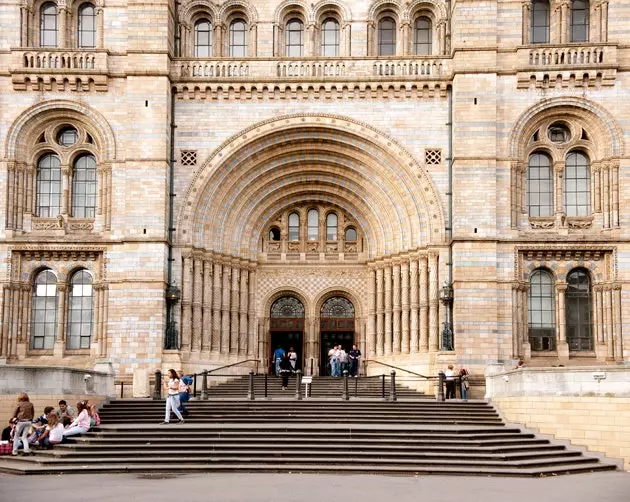
Facade of the Natural History Museum
But of course, we have lacked to put the title to Alberto , that of the prince and king consort of the omnipresent queen Victoria, and the explanation for her feat, taking out of her hat the first Great Universal Exhibition in 1851, with whose income and prestige he set out to build from scratch and with the help of a Royal Commission, what was called to be the most modern neighborhood in Victorian London: Albertopolis.
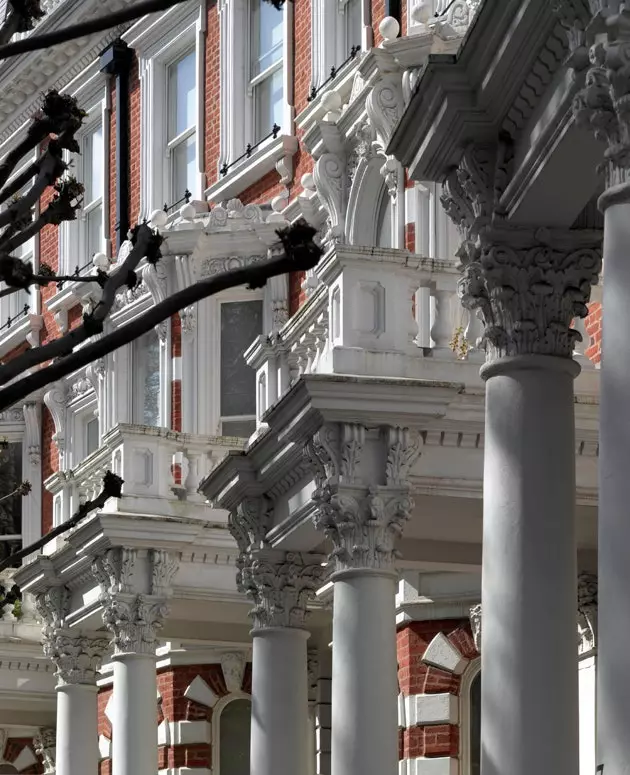
The South Kensington Cityscape
Once the introductions have been made, go through South Ken , as Londoners affectionately and somewhat snob call it, is to set foot on the most cultured square meter in the British capital. When it's sunny, the plan is to visit its museums and gardens, and when it's cold, take advantage of the bad weather and ice-skate on the ice rink. Museum of Natural History. Regardless of the weather forecast, for the rest of the days, theirs is to enjoy bistros and bakeries in Little France, another of the nicknames to which the neighborhood responds due to the number of businesses and citizens coming from the other side of the canal of the Stain residing in it. But let's go by parts.
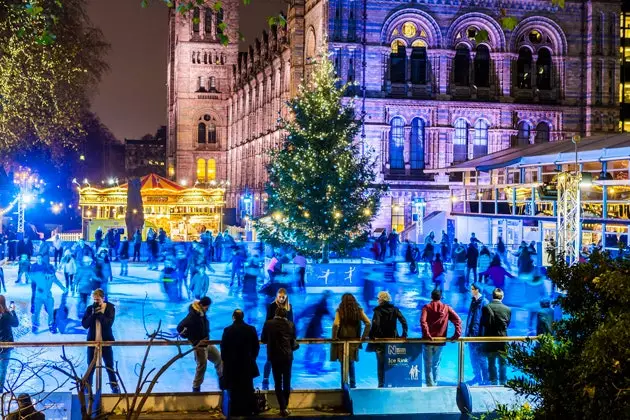
Ice skating at the entrance of the Natural History Museum
BEFORE, ALL THIS WAS COUNTRYSIDE
The origin of the name of the neighborhood is in the kensington palace , where, and not by chance, Queen Victoria was born without imagining until she was proclaimed as such at the age of 18 that one day she would rule the destiny of the greatest empire that the earth knew at that time. Because it rose to the south of this house, it was baptized as South Kensington. like the San Pablo's cathedral , was designed by Christopher Wren , but the architect preferred to use brick and slate here, since at that time it was a country house far from central London. Lose yourself in its gardens and enjoy its temporary exhibitions, but don't get too comfortable, as it is the official residence of the Duke and Duchess of Cambridge, Prince William and Catherine.
In front of its façade, the statue of Victoria looks impassively on a large pedestal, serious and almost pouting, perhaps due to the commotion that London children have been organizing for decades in the pond, a large pond that reflects what was their first palace Y where to launch wooden sailboats and feed the army of swans, pelicans and ducks It is the ultimate for the little ones.
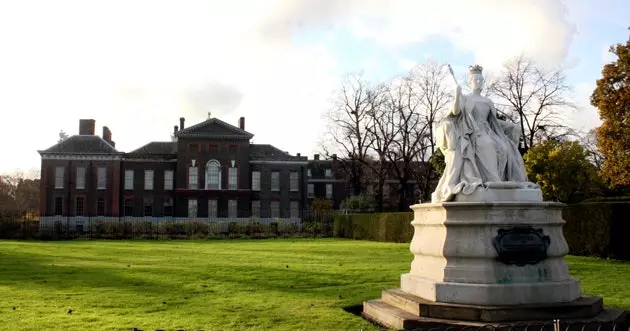
Kensington Palace: the origin of it all
It was precisely in the Kensington Groves and Gardens where the journalist and writer J.M. Barrie wove day by day and in the company of sweet Mrs. Davies and her little children the story of Peter Pan , whose final libretto premiered in 1904. A statue recalls the close relationship of the child who did not want to grow up with this little green lung, inhabited by magical creatures, goblins and fairies.
And if so much activity whets your appetite, right next to the palace stands the Orangerie. perfect for breakfasts, brunch and snacks based on English cakes that are kept safely under glass bells and an extensive menu with all the varieties of tea you can imagine.
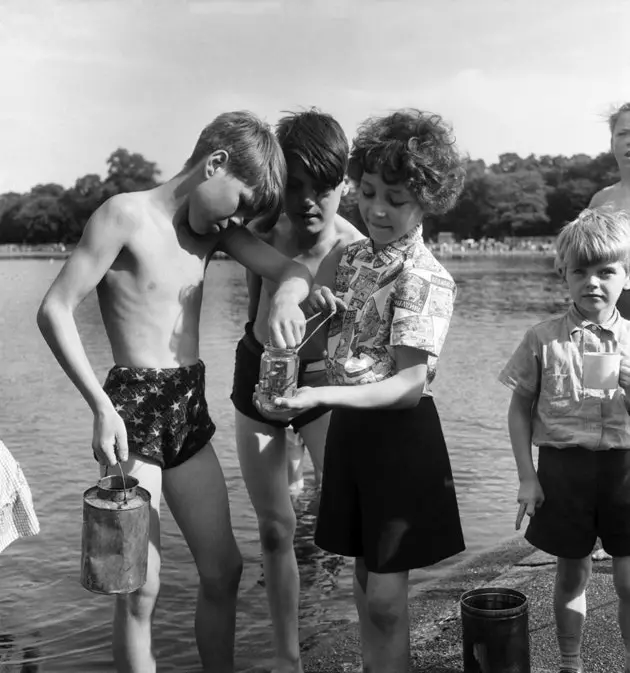
Children play in the Pond, in the Palace pond
MUSEUMS S.A.
Once the Universal Exhibition of 1851 was over, where the inventions and manufactures of the industrial revolution came together and pushed the world into the future, Prince Albert decided to invest the money raised with the tickets of the 700,000 visitors who entered the Crystal Palace raised in Hyde Park in building a neighborhood with all the technical advances of the 19th century. In it he would reserve some plots of land to build the museum institutions that would enlighten the new generations of Londoners. But, Alberto could not see his project completed, because he died prematurely after contracting typhus during a routine inspection of a sewer in London.
However, his legacy was already cemented and was concluded by the desolate Victori a, who renamed many of the new buildings after the prince and had them erected in his honor a worthy memorial of his genius.
GOES
The Victoria and Albert is the world's largest decorative arts museum, a treat for lovers of applied arts in general and rare art treasures in particular. It was opened in May 1852 by the kings who give it its name, but then it was simply called ** South Kensington Museum .** Textiles, ceramics, sculpture, painting or gold work, nothing can resist it. It has been enriched for decades with private collections of wealthy people that are donated to enter the huge thematic collections of the institution. This is how illusions such as the glass room or those of reproductions arise, with famous works of art to scale, including their own David by Michelangelo or the Portico de la Gloria of the Cathedral of Santiago de Compostela. Be sure to visit its interior patio or treat yourself to its eclectic cafeteria. Its store is recognized as one of the most complete and unique within the international museum circuit, with limited editions of catalogs and monographs or its own merchandising designs.
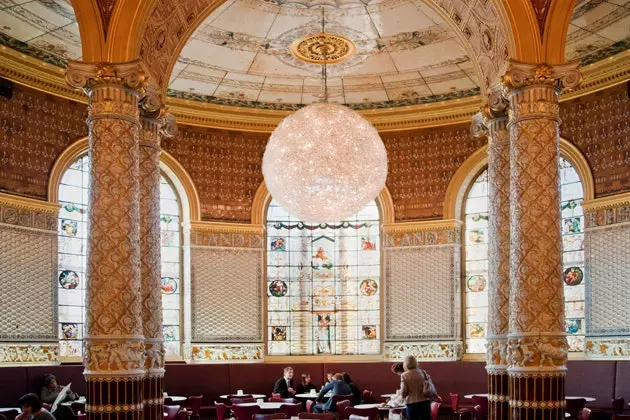
The Victoria and Albert Museum
NATURE XL
Adventurers and enthusiasts of dinosaurs and the theory of the evolution of species, the Museum of Natural History will leave you speechless. The neogothic building that houses it could well be a railway station due to its mammoth dimensions, but it is true that it should be so, if what was intended was to include in it a large part of the wonders of mother nature. Geology, astronomy, physics, chemistry or biology, everything has a place in this Victorian Ali Babá cave. From diamonds and gemstones in the rough , to one trunk section of a giant sequoia , passing through the bones and skins of Noah's ark in its entirety and beyond, with its vast collection of dinosaurs. It's easy to imagine Darwin walking around here with theories about him running through his head, though instead of imagining him, you can see him and pay your respects on the central flight of the main stairs. And before you leave We offer you a challenge among all the animals that appear represented in stone on its façade, look for a pterodactyl about to take flight.
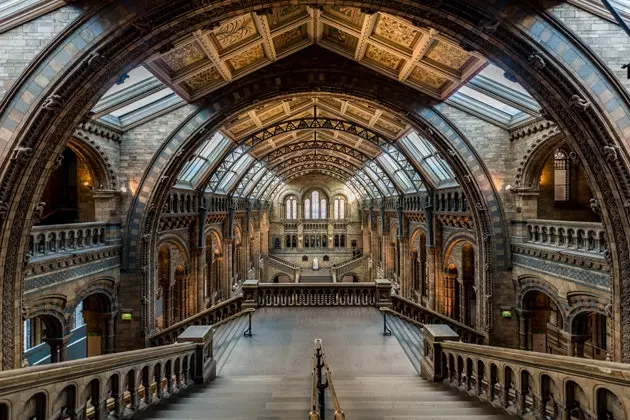
Main hall of the Natural History Museum
SCIENCES AND CIA.
Among the curiosities kept by the London Science Museum is the Apollo X , the first spacecraft that was manned and managed to enter the orbit of the moon, paving the way for number XI, which was the one that took the man to the moon and Armstrong to history. The museum was formed in 1857 with the surpluses of the Universal Exhibition and some other knick-knack from the Royal Collections such as the scientific arm of the South Kensington Museum, which would become the Victoria and Albert and from which it was spun off a few years later to become the Patent Museum . Its current headquarters were inaugurated after the end of World War I and, so to speak, its collections are the envy of other institutions in the fields of science, medicine, technology and industry worldwide. Children will have a great time inside, interacting with the different eras of industrialization through their virtual simulators and even traveling to the future as if they were in a modern Jules Verne novel.
MUSICAL ROUND
A perfect circle consecrated to the muses is perhaps the most significant building in Albertópolis, the Royal Albert Hall, is considered one of the best concert halls in the world. It has been delighting the ears of the most recalcitrant music lovers or fans of rock and indie music since 1871. Nothing resists him from the great classical masters to the fashionable bands, everyone wants to leave their echo inside. Thus, it keeps a history worthy of the Guinness book, with performances by Frank Sinatra, Sir Paul McCartney, Led Zeppelin, Bob Dylan or the Rolling, in a long and brilliant etcetera. It is the headquarters of BBC Proms , one of the largest classical music festivals in the world and the Cirque du Soleil usually does its pirouettes in it every season.
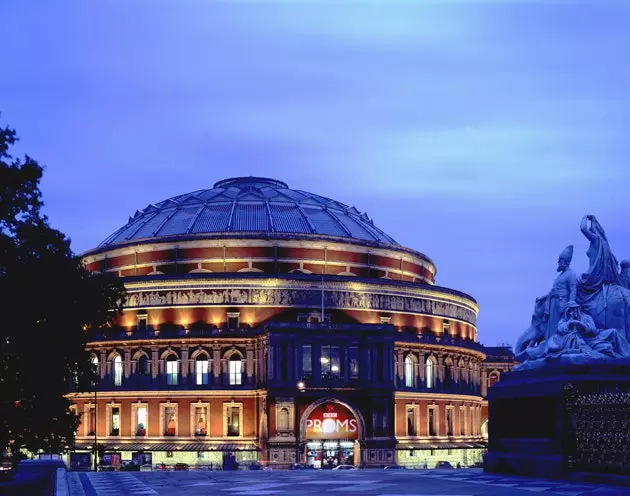
Royal Albert Hall
The Imperial College of London, the Royal College of Arts and Music and the building of the Royal Geographical Society complete the microcity of Alberto, a neighborhood built in grandiloquent fashions with clonal stately residences and monumental facades
As for the Albert Memorial , its 'haters' are not few, almost as numerous as its lovers and defenders, who see in its 53-meter-high Gothic spire supported by representations of all the great artists of history and flanked by the personifications of Africa, Asia , Europe and America, the well-deserved tribute to the ideologue of this small city of the arts in the heart of London.
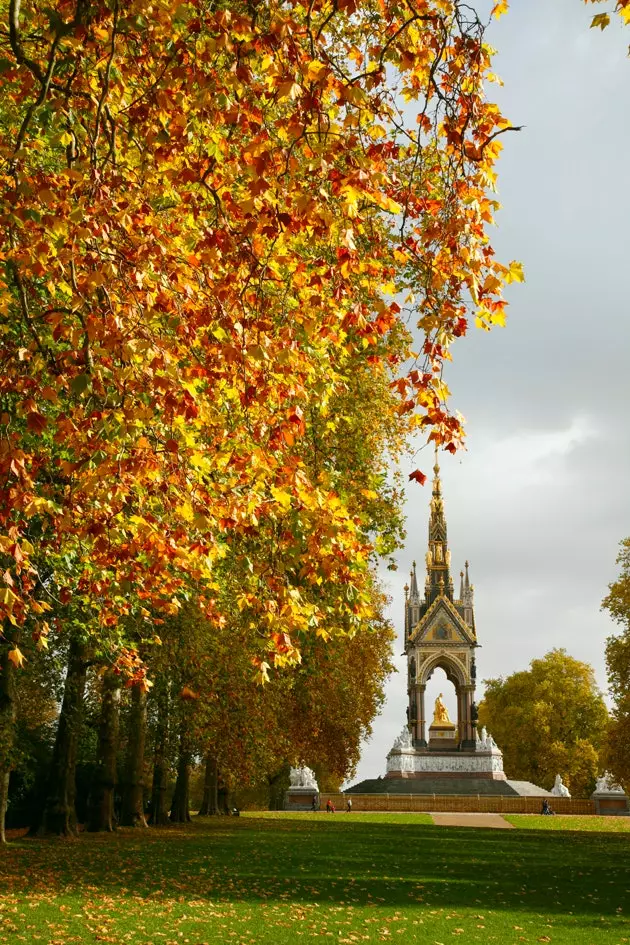
Albert Memorial
*** You may also be interested in...**
- Five restaurants in London to eat well and repeat
- Recipes for the perfect afternoon tea and where to taste it in London
- 100 things you should know about London
- 25 things about London that you will only know if you have lived there
- 22 things you miss about Spain now that you don't live here
- No tie and crazy: 13 things to do in the City of London
- I want to be like Peckham: the new neighborhood you have to discover in London
- Everything you need to know about London
- All articles by Álvaro Anglada
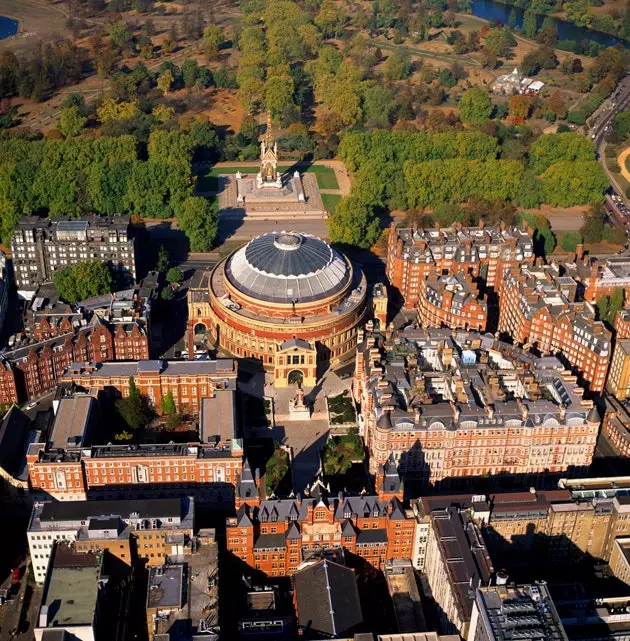
This is Albertopolis
